Transcend JetDrive 720 are compatible with these MacBooks.
Yes I know, I'm just weighing my options here.
Thank you for your answer!
Last edited:
Transcend JetDrive 720 are compatible with these MacBooks.
I believe the late 2012 uses a different ssd connector from the late 2013, 2014, and 2015 retina MBP.
https://www.amazon.ca/SATA-mSATA-MACBOOK-Retina-Adapter/dp/B00OQG630U
I can't say for sure it will work but I have the same since in a dell laptop and it's quick with windows 7.Nice! So I suppose that this SSD would do, for example? https://www.amazon.com/dp/B00TGIVVKU/
MacBook Air 13 Early 2015 with 960 EVO 250GB MZ-V6E250: small adapter with NF-941A on the back
This is indeed the first time I have come across the reboot problem on a 2015 Air...
how can I format a KC1000 ssd to 4K ?
And is there any guide for installing these SSDs to macbook pro?
It explains how to fix NVMe SSD which installed as external disk into internal disk with MacX86.
https://www.tonymacx86.com/threads/...0-13-on-x99-full-success.227001/#post-1542618
Look at "E.4) M.2/NVME Configuration:".
This method uses "Clover" (boot loader). Even for native MacBook Pro/Air, Clover can be applicable, But I don't want. We should learn about that method. I want to use more simple and easy way, not using Clover, if possible.
Clover:
https://sourceforge.net/projects/cloverefiboot/
As for later 2015 Macs (MacBook Pro/Air), this patch is not need because NVMe SSD installed as internal disk.
Additional notes 2017/10/28
I found a patch for kext that could be applied.
https://github.com/RehabMan/patch-nvme
"That way HackrNVMeFamily-*.kext can be used for 10.12/10.11 and IONVMeFamily.kext (native) can be used on 10.13."
"The result is HackrNVMeFamily-10_11_5.kext. You can install it to /S/L/E, /L/E, or use Clover kext injection with it. It will not interfere with IONVMeFamily.kext and system updates will not change it."
/S/L/E = /System/Library/Extensions
/L/E = /Library/Extensions
I tried, a error with "Vanilla MD5 does not match" had occurred. (now I am on 10.12.6 Sierra) But there are pre-bult kext(s) in that zip file, you may use soon. (I don't have test environment now.)
Hi,
thanks for your answer, I'm OK to start a new thread but where ? this concerns not only Notebooks Mac but also Desktops (Mac mini and iMacs).
Also I need to do further testings...
The late testing results follows :
First a bad news for the MacBook Pro retina 15", mid 2015 : it doesn't work... I had various results from no chimie, no boot with black display, to chimie and boot on an external drive, and the NVMe SSD was recognized, usable and writable but not bootable...
This is bad news for this particular Mac, maybe this is because the mid-2015 MBPr 15" has 4x PCIe 3.0 lanes and the adapters are not made for such high speed signals ?
As for the MacBook air early 2015, every NVMe SSD I tested worked !
And with both 2 adapters I had.
The drive who worked are : a Samsung SM961, a 960 EVO, a 960 PRO and a WD Black.
Hi Gilles,
I have a macbook air early 2015 and a WD Black 512GB Performance SSD - 8 Gb/s M.2 2280 PCIe NVMe Solid State Drive – WDS512G1X0C
Can you tell me which adapter I should buy?
I cannot find any good information about that.
Thanks,
Andrea
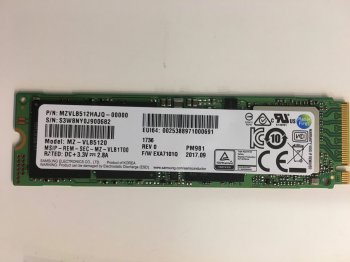
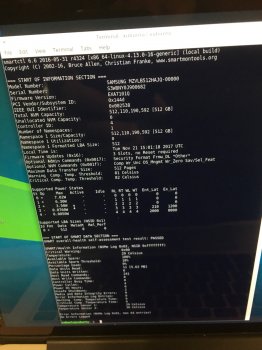
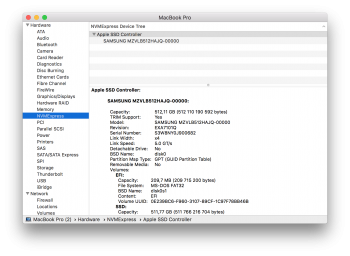


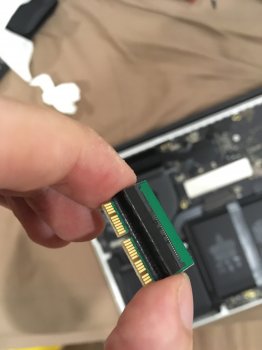
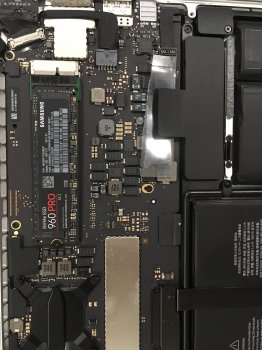

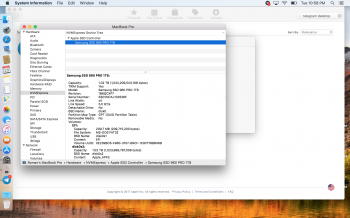
battery:@damex: My sintech adapter just arrived.
I am still afraid of the disadvantages of a non apple SSD.
As I understood you, the only disadvantages are:
- about 30% less battery time
- more heat production, but not more fan activity?
Where and why did you put the thermal paste?
Do I have to flash a Samsung 960 EVO to the newest also?
Or is it possible, that the new SSDs have the actual firmware already?
Martin
@damex: Thank you for sharing your experiences! I just ordered a 960 EVO 1TB to give it a try. I will report here, also.
Just one more question concerning the firmware update.
Is it possible to update the firmware for the SSD, that is running the system?
Do I have to install bootcamp, or is the firmware update possible under parallels?
Martin
Please be all carefull....you will have to use bootcamp.
it is not a big problem since you don't have to pay for windows 10 just for that purpose and it takes just 5 to 10 minutes to install it

